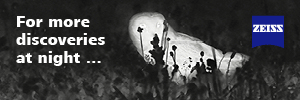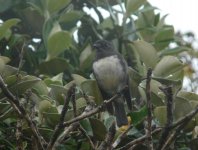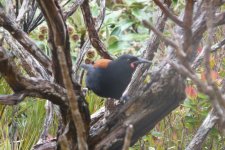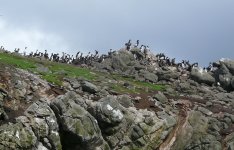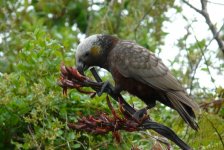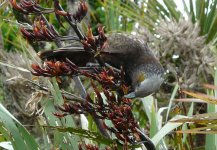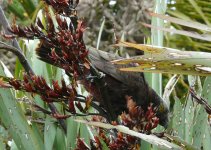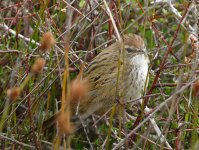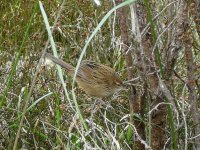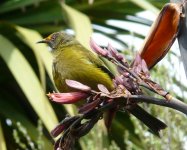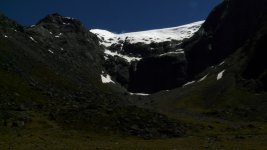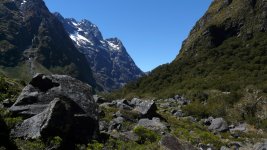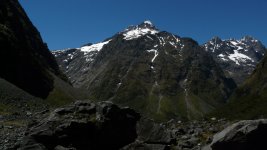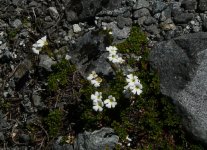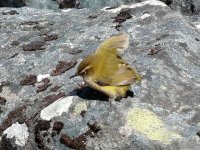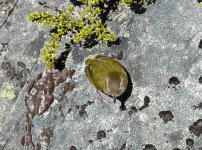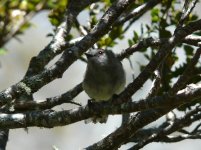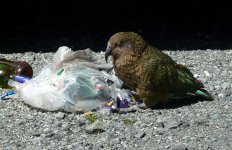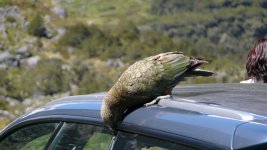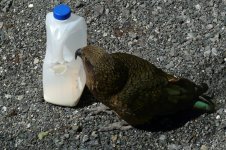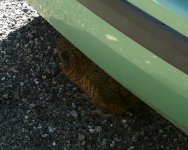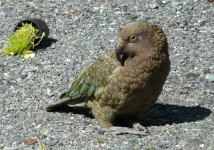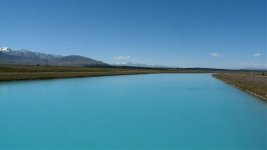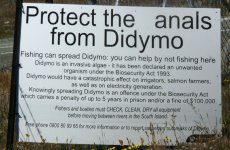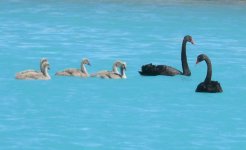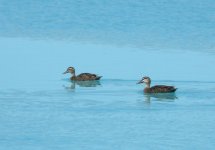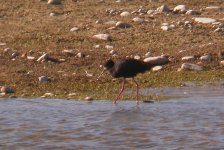
Hmm, slightly daft title. Sorry about that. This is another one of those 'work trips' I do from time to time. Admittedly the first week isn't really work at all though. Anyway...
Day One: 23rd November 2008
Auckland and Invercargill
I arrived into Auckland at around 10:30 and stumbled over to the domestic departures terminal for my flight to Invercargill via Christchurch. The first birds were deeply familiar: House Sparrow, Starling and Song Thrush. The domestic terminal proved a bit more interesting, with distant views over the nearby mudflats. The best bird was a lovely hunting Australasian Harrier, looking sort of like a cross between male Hen and Marsh Harriers. A couple of distant Pied Shags flew over the mudflats and I also managed to ID some Spur-winged Plovers, or Masked Lapwings if you prefer to give them a less confusing name. There were quite a lots of waders on the mudflats but they were too distant to ID, and also a few Black-backed Gulls, or Kelp Gulls if you prefer to give them the name everyone else does.
I arrived into Invercargill late in the afternoon to rather warm and pleasant weather. After settling into my accommodation (at Living Space in the city centre). I headed down to the estuary for an evening walk. The clouds thickened and there were regular spots of rain, but nothing too terrible. The birds were rather good though. I walked along the path from Stead Street wharf (basically south from the bridge over the river on the city side) and there were several hundred birds either on the mud or on the rather new looking lagoon. Most numerous were Pied Stilts (or should I be calling them Black-winged?), Bar-tailed Godwits, Black Swans and Masked Lapwings. There were small numbers of South Island Pied Oystercatchers, which look an awful lot like, well, Oystercatchers. I thought they sounded subtly different though. Three immature Spotted Shags were resting by the bridge and a couple of Little Shags flew over. There were some Black Shags too, which sound exciting until you realise they’re really just Great Cormorants. A Welcome Swallow was darting about under the bridge, where it seemed to have a nest, and another Australasian Harrier glided over the grass. There were several White-faced Herons feeding at close range in the muddy creeks and small numbers of Red-billed Gulls.
One of the birds I was particularly hoping to see here was Royal Spoonbill, and I wasn’t to be disappointed. At least fifteen were scattered across the mud, most busily feeding in small groups, sweeping their bills from side to side. Rather smart birds they are too, with a deep black mask and bill. The lagoon held hundreds of ducks. Many were Mallards but there were a hundred or more Australasian Shovelers, some delicate looking Grey Teal and a few pairs of very fine Paradise Shelducks. I also saw a couple of what seemed good candidates for Grey Duck. These hybridise quite a bit with Mallards so they’re a bit tricky. I assume they derive their name not from being grey but from being a bit of a grey area. Also on the lagoon were hundreds of dainty Black-billed Gulls, looking paler and smaller than their Red-billed cousins.
Passerines were an altogether more British affair, with the trees and grassland swarming with Blackbirds, Song Thrushes, Starlings, Chaffinches, Greenfinches, Goldfinches, Redpolls, Yellowhammers, Dunnocks, Skylarks and House Sparrows. Of more interest were a few Silvereyes, with their whinnying calls. A lovely cascading whistle in the pines caught my attention and I was soon watching a pair of Grey Warblers flitting about at close range. As the night closed in, a Caspian Tern flew downstream, adding to the list of continents in which I’ve seen this bird.
Day One: 23rd November 2008
Auckland and Invercargill
I arrived into Auckland at around 10:30 and stumbled over to the domestic departures terminal for my flight to Invercargill via Christchurch. The first birds were deeply familiar: House Sparrow, Starling and Song Thrush. The domestic terminal proved a bit more interesting, with distant views over the nearby mudflats. The best bird was a lovely hunting Australasian Harrier, looking sort of like a cross between male Hen and Marsh Harriers. A couple of distant Pied Shags flew over the mudflats and I also managed to ID some Spur-winged Plovers, or Masked Lapwings if you prefer to give them a less confusing name. There were quite a lots of waders on the mudflats but they were too distant to ID, and also a few Black-backed Gulls, or Kelp Gulls if you prefer to give them the name everyone else does.
I arrived into Invercargill late in the afternoon to rather warm and pleasant weather. After settling into my accommodation (at Living Space in the city centre). I headed down to the estuary for an evening walk. The clouds thickened and there were regular spots of rain, but nothing too terrible. The birds were rather good though. I walked along the path from Stead Street wharf (basically south from the bridge over the river on the city side) and there were several hundred birds either on the mud or on the rather new looking lagoon. Most numerous were Pied Stilts (or should I be calling them Black-winged?), Bar-tailed Godwits, Black Swans and Masked Lapwings. There were small numbers of South Island Pied Oystercatchers, which look an awful lot like, well, Oystercatchers. I thought they sounded subtly different though. Three immature Spotted Shags were resting by the bridge and a couple of Little Shags flew over. There were some Black Shags too, which sound exciting until you realise they’re really just Great Cormorants. A Welcome Swallow was darting about under the bridge, where it seemed to have a nest, and another Australasian Harrier glided over the grass. There were several White-faced Herons feeding at close range in the muddy creeks and small numbers of Red-billed Gulls.
One of the birds I was particularly hoping to see here was Royal Spoonbill, and I wasn’t to be disappointed. At least fifteen were scattered across the mud, most busily feeding in small groups, sweeping their bills from side to side. Rather smart birds they are too, with a deep black mask and bill. The lagoon held hundreds of ducks. Many were Mallards but there were a hundred or more Australasian Shovelers, some delicate looking Grey Teal and a few pairs of very fine Paradise Shelducks. I also saw a couple of what seemed good candidates for Grey Duck. These hybridise quite a bit with Mallards so they’re a bit tricky. I assume they derive their name not from being grey but from being a bit of a grey area. Also on the lagoon were hundreds of dainty Black-billed Gulls, looking paler and smaller than their Red-billed cousins.
Passerines were an altogether more British affair, with the trees and grassland swarming with Blackbirds, Song Thrushes, Starlings, Chaffinches, Greenfinches, Goldfinches, Redpolls, Yellowhammers, Dunnocks, Skylarks and House Sparrows. Of more interest were a few Silvereyes, with their whinnying calls. A lovely cascading whistle in the pines caught my attention and I was soon watching a pair of Grey Warblers flitting about at close range. As the night closed in, a Caspian Tern flew downstream, adding to the list of continents in which I’ve seen this bird.



